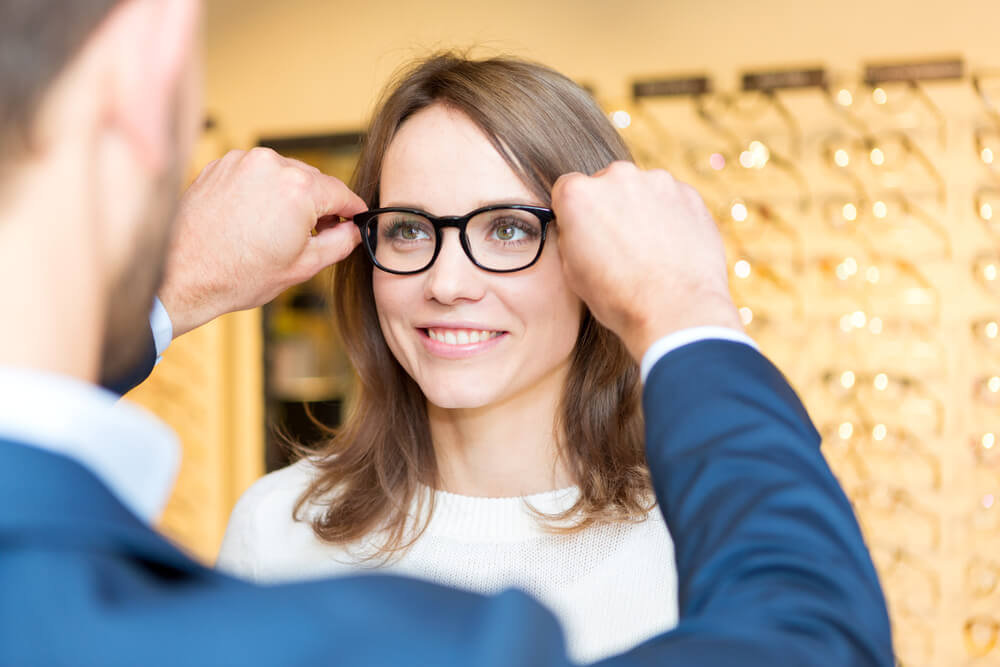What you need to know when it comes to Glasses measurements
Glasses Measurements Explained
When choosing your new, or first pair of glasses, you will want to consider a pair that works with your style and suits your appearance, but also one that will improve your vision the most AND provide all-day comfort!
When you see all the measurements involved in getting the right lenses and frames for you, you may find it a bit intimidating but don't panic, not all of these measurements are something you need to worry about, your Optometrist and dispensing optician will know what they mean.
If you want to buy your prescription glasses online it may help to have a basic understanding as to what all those measurements mean and which ones are important.
Here’s a breakdown of the measurements you may find on your prescription and glasses. Don't worry if you don't see them all, not all prescriptions feature all measurements.

Measurements Relating To Your Prescription
The foundation of accurate glasses measurements lies in your prescription. This prescription, provided by your optometrist or ophthalmologist, specifies the degree of vision correction required for each eye. It consists of two main components:
- Sphere (SPH) - The Sphere measurement addresses near-sightedness (negative values) or farsightedness (positive values)
- Cylinder (CYL) - The Cylinder measurement indicates the presence of astigmatism if any.
- Pupil Distance (PD) - Pupil distance, or PD, is the distance between the centres of your pupils. This measurement is crucial for ensuring that the prescription in your lenses is positioned correctly in relation to your eyes. An accurate PD measurement helps to achieve proper alignment, preventing issues like eyestrain and discomfort. PD can be measured in monocular (one eye at a time) or binocular (both eyes together) values. Visit our blog post ‘How to Measure Pupillary Distance’ for further details on how to understand and measure PD.
Measurements Relating To Your Vision
- Pantoscopic Tilt - Pantoscopic tilt refers to the angle at which the frame sits on your face. It affects the way your lenses align with your eyes. Proper pantoscopic tilt ensures that your lenses are positioned accurately, preventing issues such as distorted vision and discomfort.
- Vertical Height - Vertical height refers to the height of the lens in your eyeglass frame. This measurement is especially important for bifocal or progressive lenses, as it determines the area available for different prescriptions. Proper vertical height ensures that you can comfortably see both near and far objects without straining your eyes.
- Vertex Distance - Vertex distance refers to the space between your eyes and the back surface of the lens. This measurement is particularly relevant for individuals with high prescriptions. Accurate vertex distance ensures that your lenses provide the intended level of correction without causing unnecessary.
Measurements Relating To Your Glasses Fit
Frame Size - Frames come in various sizes, and finding the right fit is vital for both visual comfort and aesthetics. Frame measurements typically include lens width, bridge width, and temple length. Lens width affects your field of vision, bridge width determines how the glasses sit on your nose, and temple length affects the overall fit behind your ears.
Other Considerations
Lens Material and Coatings - Beyond the basic measurements, you should also consider factors such as lens material and coatings. Different materials have varying levels of thickness and refractive indexes, affecting the overall weight and appearance of your glasses. Additionally, coatings like anti-reflective, scratch-resistant, and UV protection coatings enhance the durability and performance of your lenses.
All the measurements involved in picking the perfect eyewear are so important in making sure you have a great glasses-wearing experience! By understanding all these measurements, you can find a pair that caters to all your needs, both aesthetically and optically. The more comfortable you feel in your glasses, means you're more likely to want to wear them, meaning your eyesight no longer has to suffer!
Author: John Dreyer Optometrist Bsc(Hons), MCOPTOM, DipCLP
Created: 18 Oct 2023, Last modified: 7 Jan 2025

